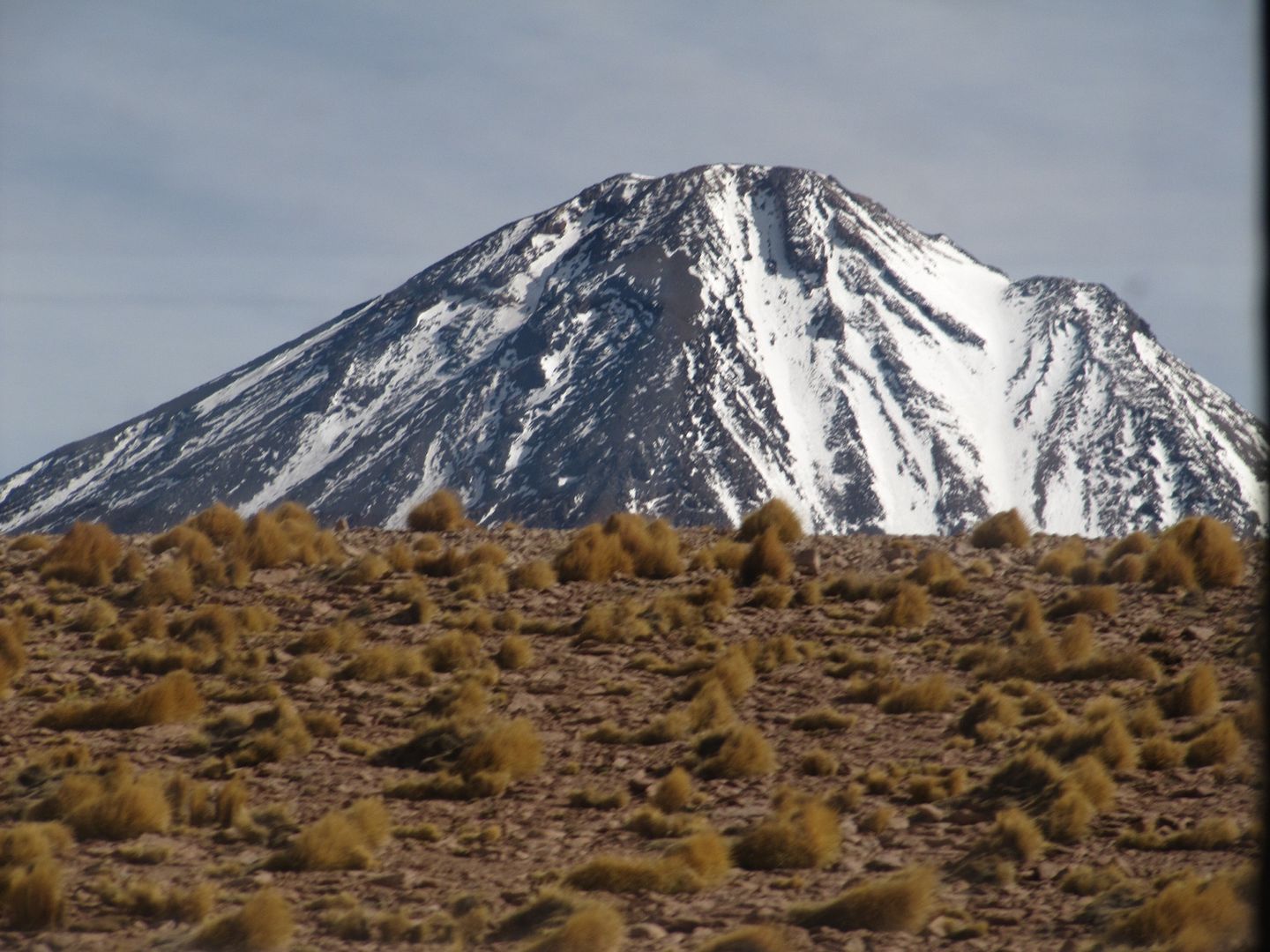 |
| Bolivian Altiplano |
After the sewage smell of the campsite, no-one was sorry to leave. Not so keen on the 7:30am start though, especially as I was on the cook group for breakfast, which meant I had to be up at 6am!
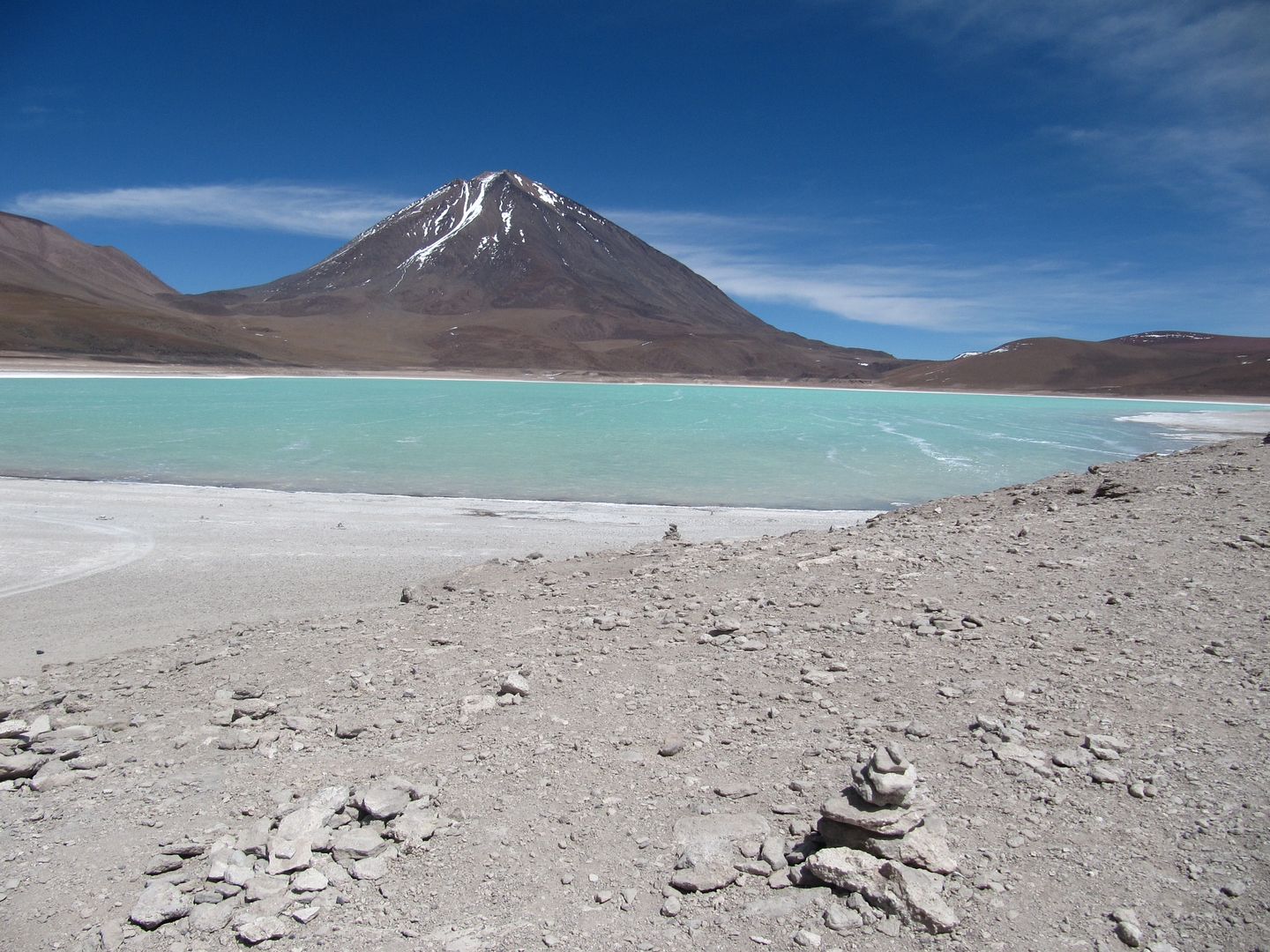 |
| Bolivian Altiplano |
The first day’s journey was only about 150km, but it took us all day. And as this was the day when we hit our highest altitude, a couple of our group got quite ill.
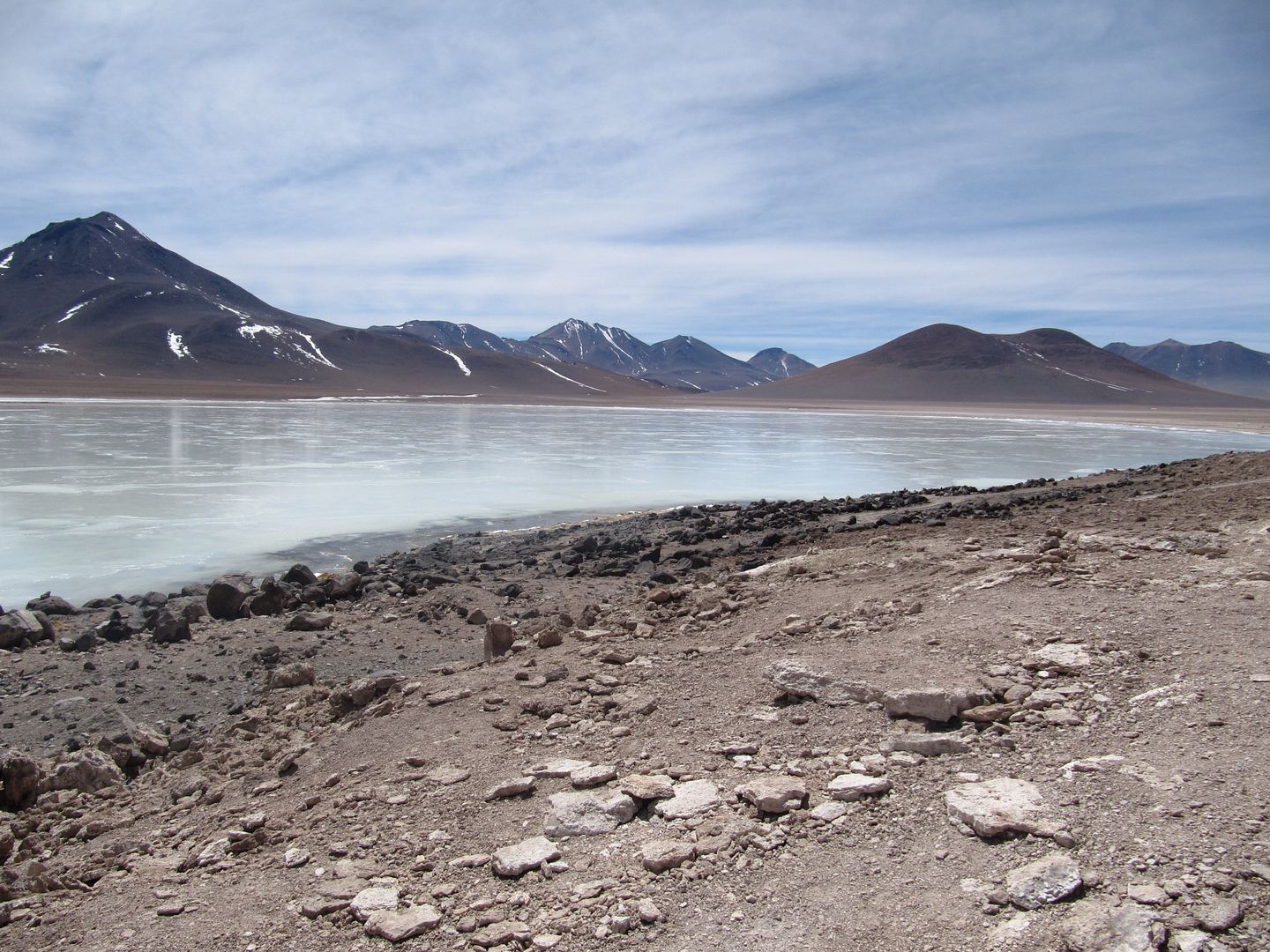 |
| Bolivian Altiplano |
However for the rest of us the journey was a real highlight. We all have i-pods, books, playing cards etc to keep us amused on long trips, but we spent most of the time just staring out of the window, not wanting to miss the next spectacular view.
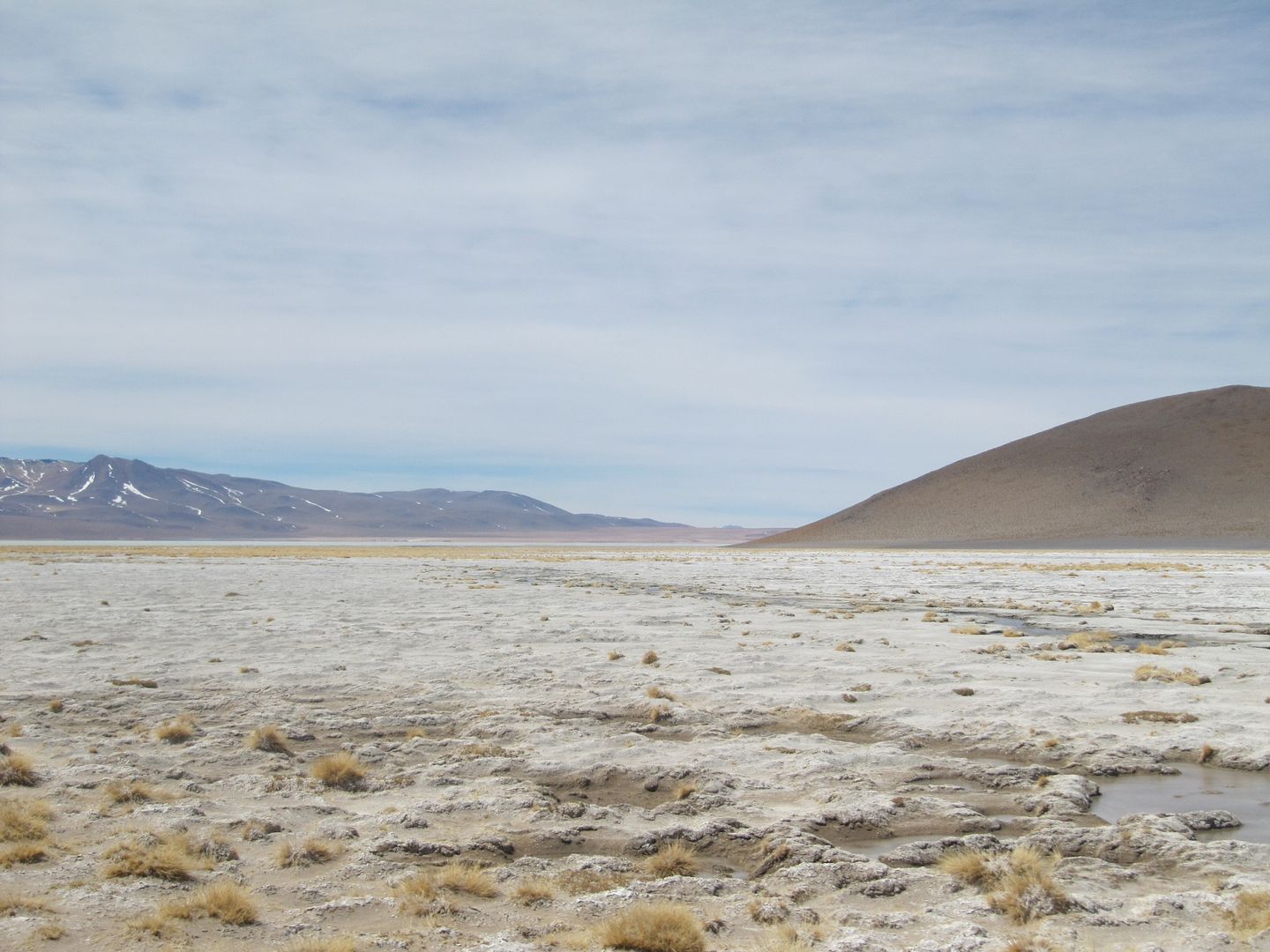 |
| Bolivian Altiplano |
Close by was the Laguna Verde (Green Lagoon), which as you can
probably guess is green. This lake is lifeless, because it contains magnesium, calcium and arsenic, which makes it poisonous to all wildlife. Nearby was Llicancahur, a 5,868m high volcano.
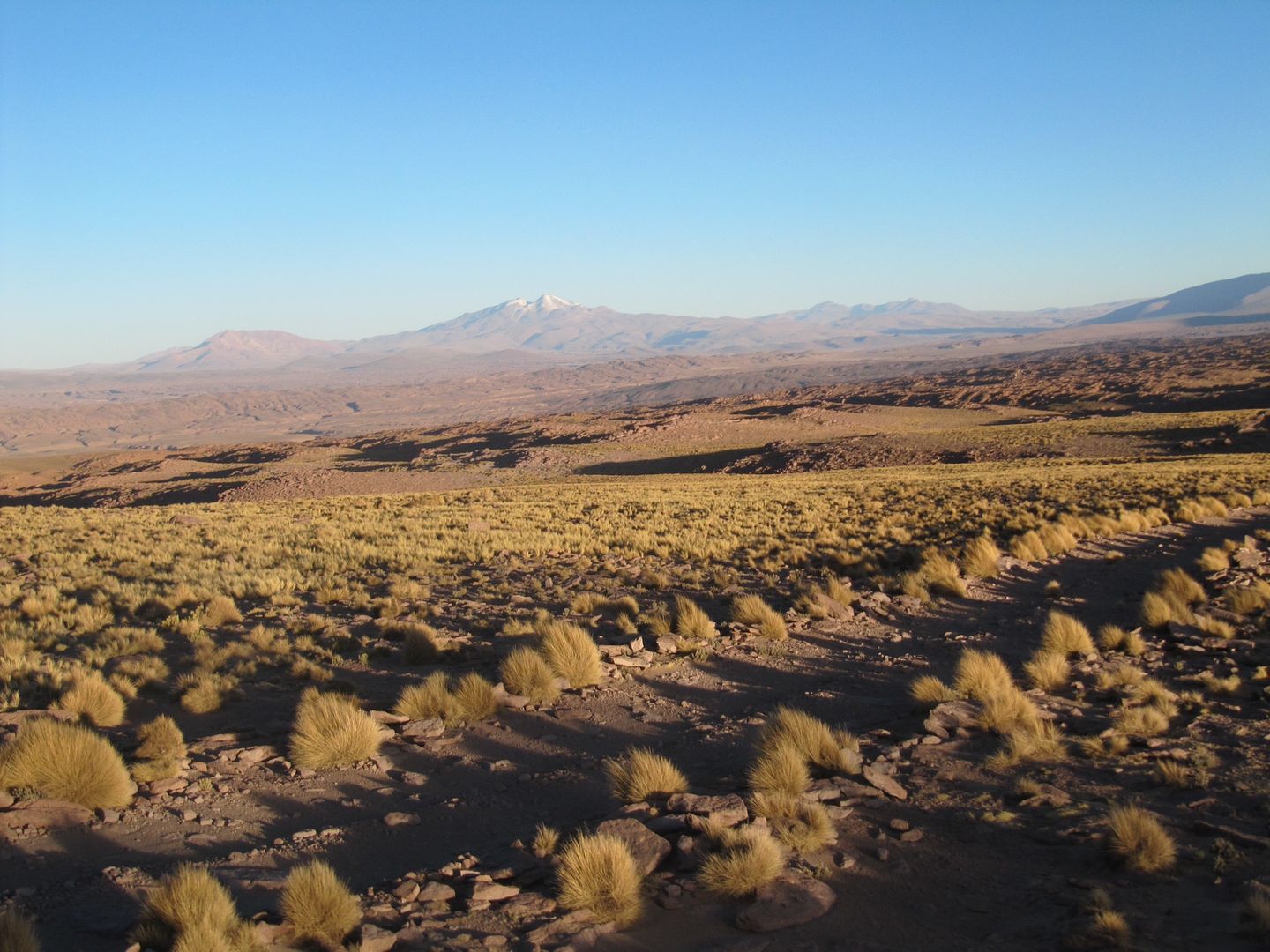 |
| Bolivian Altiplano |
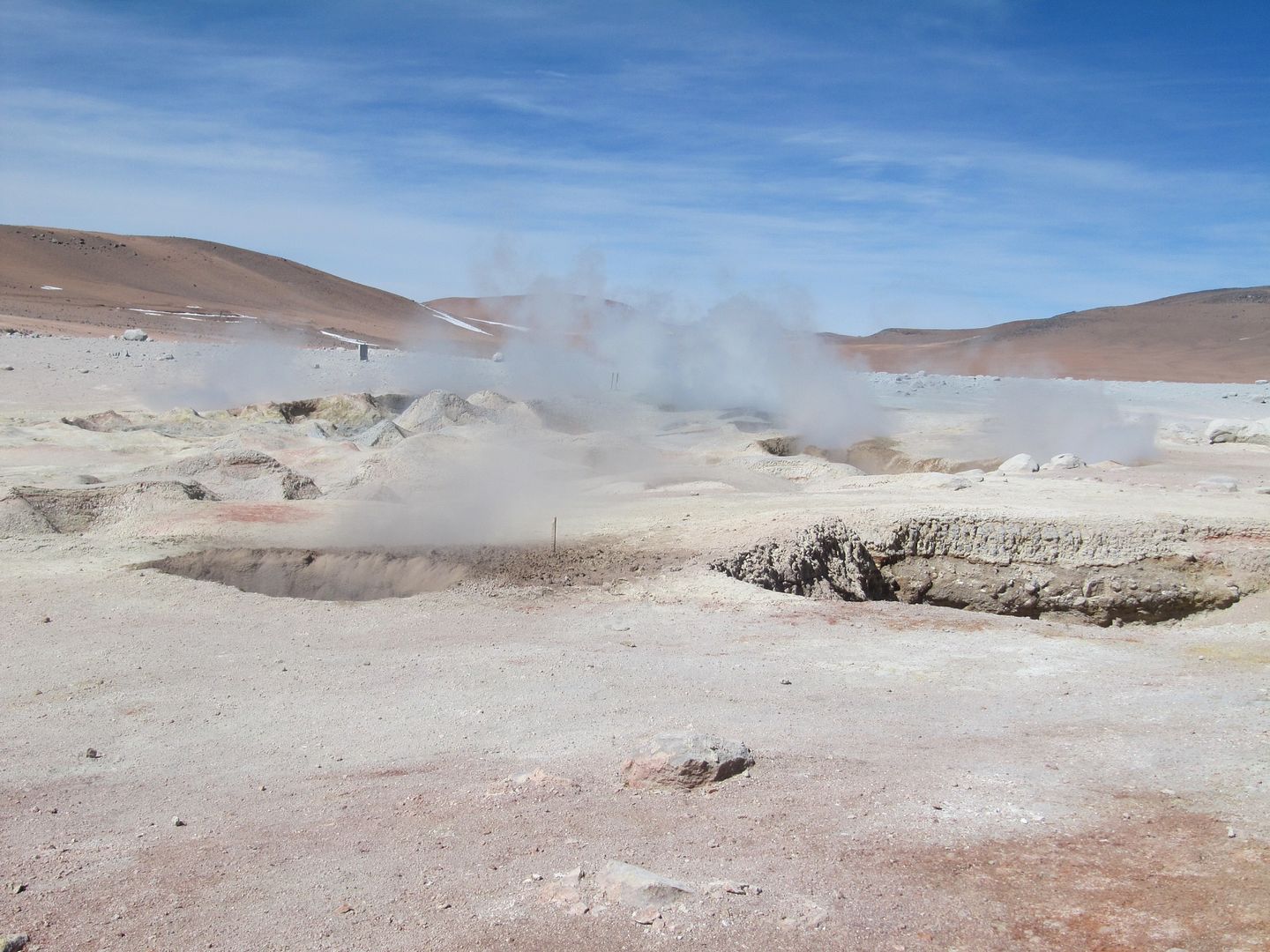 |
| Bolivian Altiplano |
We then wound our way up to 5,000 metres to the top of Sol de Manana, which is an an area of constant volcanic activity, emitting sulphurous gases, steam and geysers that can reach 150°c. Our guide led us around this area very carefully as a wrongly placed foot can go through the thin surface and create a new steam hole right under you.
 |
| Bolivian Altiplano |
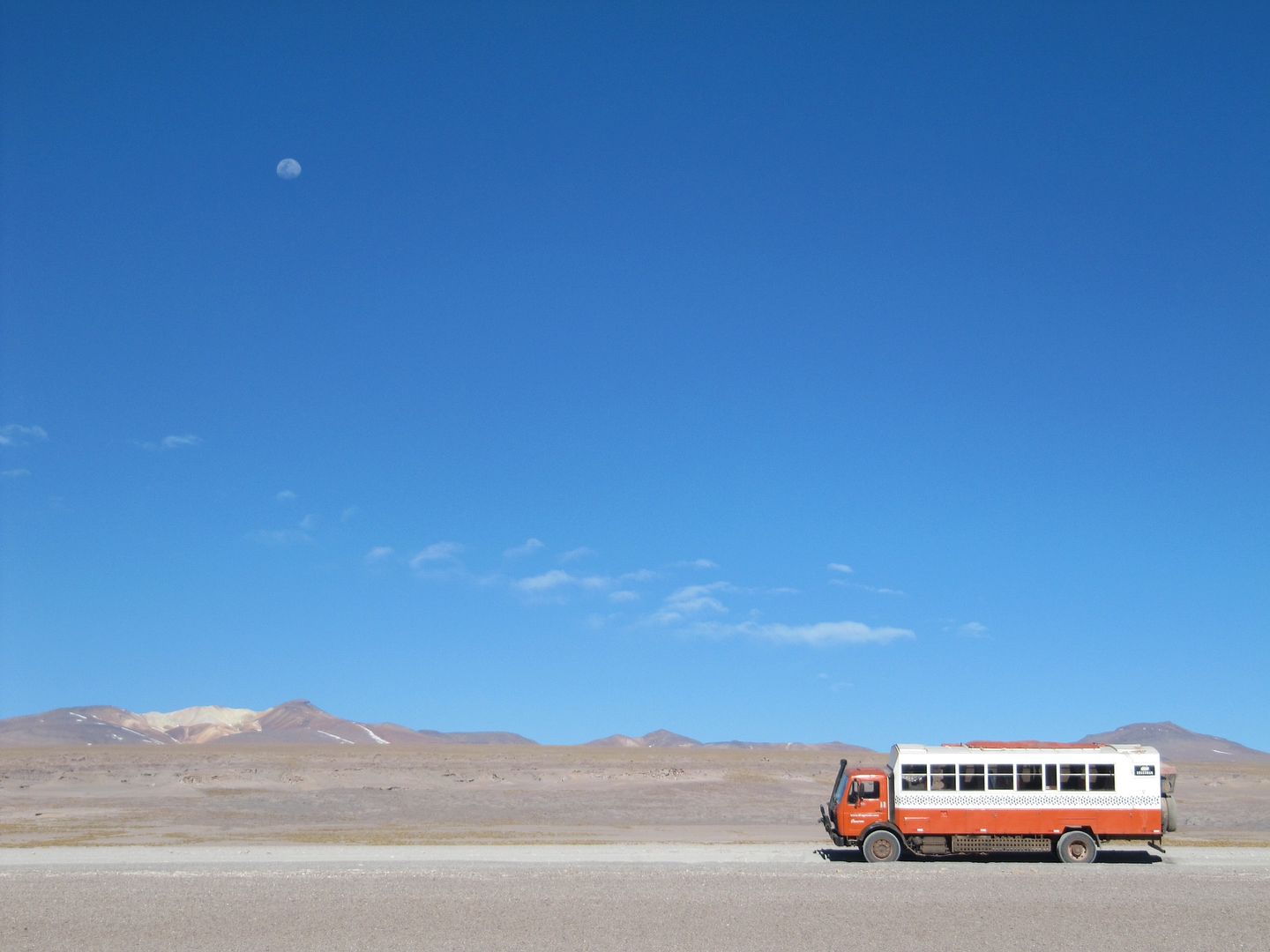 |
| Bolivian Altiplano |
Our next stop was the Laguna Colorada, which is a 45km2 red lake. This has to be seen to be believed as it just seems so unlikely. But it is really very red and really very beautiful. The colour is caused by algae, similar to that which makes flamingos pink.
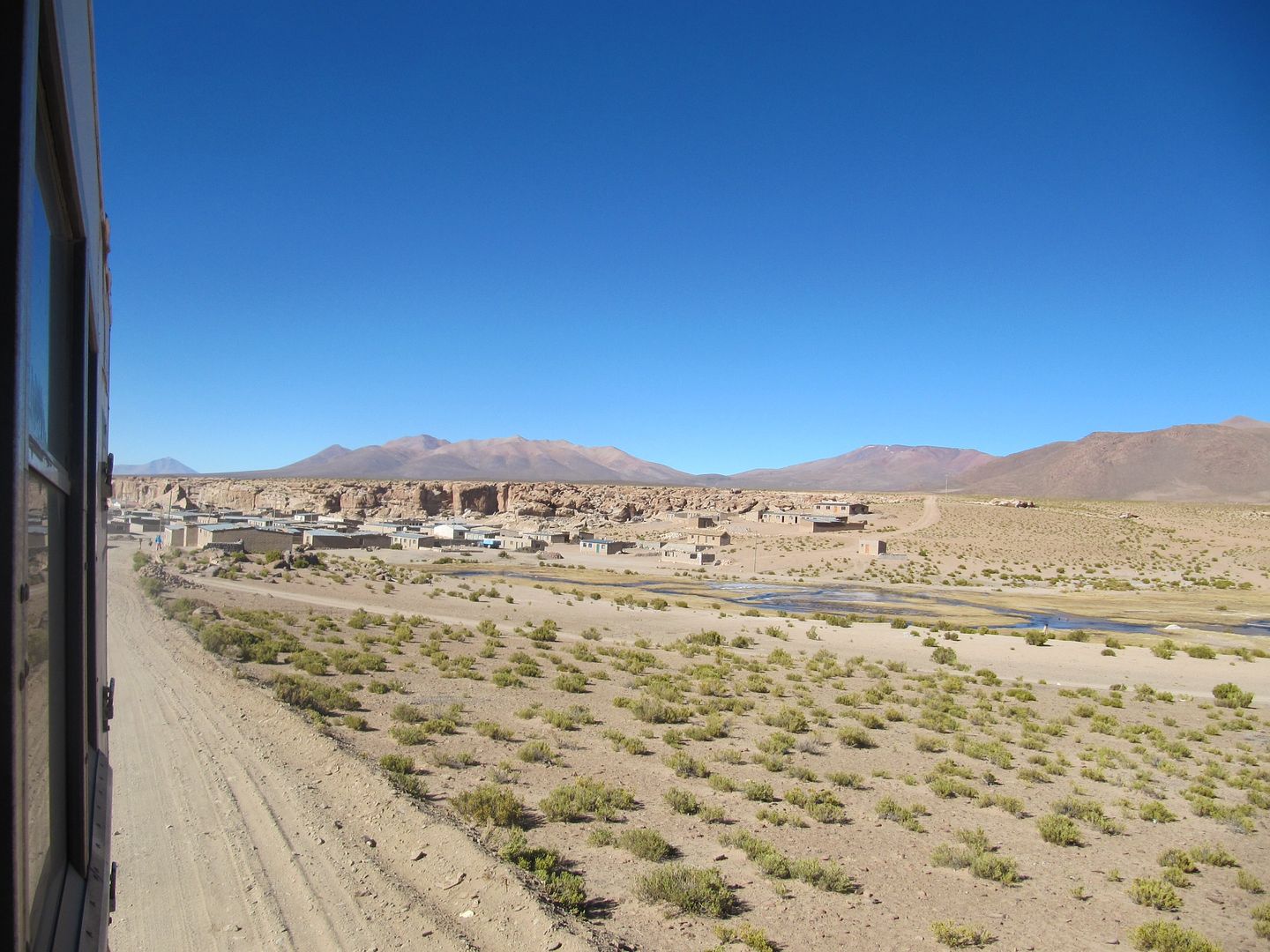 |
| Mallcu, Villa Mar, Bolivian Altiplano |
From there we made our way to Mallcu, Villa Mar, where we were to spend the night in a very basic stone lodge. The walls were a bit like unclad breeze blocks and there was no heating, so we were prepared for it to be very cold indeed and layered up accordingly. But in fact the thick bedding that they gave us was very effective, and we ended up having to take layers back off during the night. That was all the more impressive given that when we were ready to leave the next day, Cameron’s water tank was frozen and unusable. As drinking a lot of water is important at altitude, we made use of our steripen to purify some local water for the group until the tank defrosted.
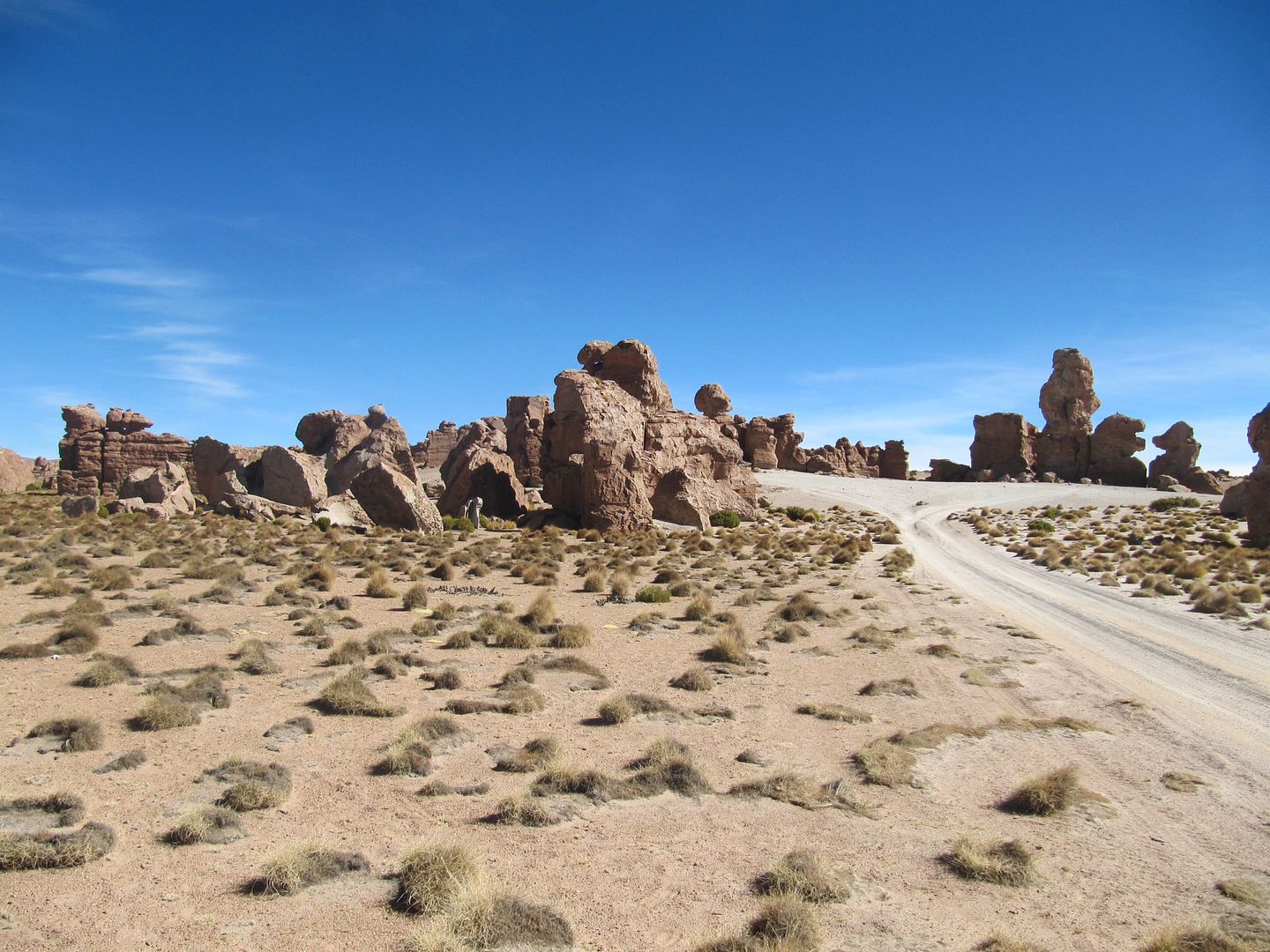 |
| Valle del Brocas, Bolivian Altiplano |
In the morning we set off again, thankfully with most of our group feeling much better. Our next stop was in the Valle del Brocas – the valley of rocks, which consists of many volcanic rock formations that are 25,000 years old. Our guide showed us around and pointed out the rocks that, with a bit of imagination, looked like people, condors and parrots.
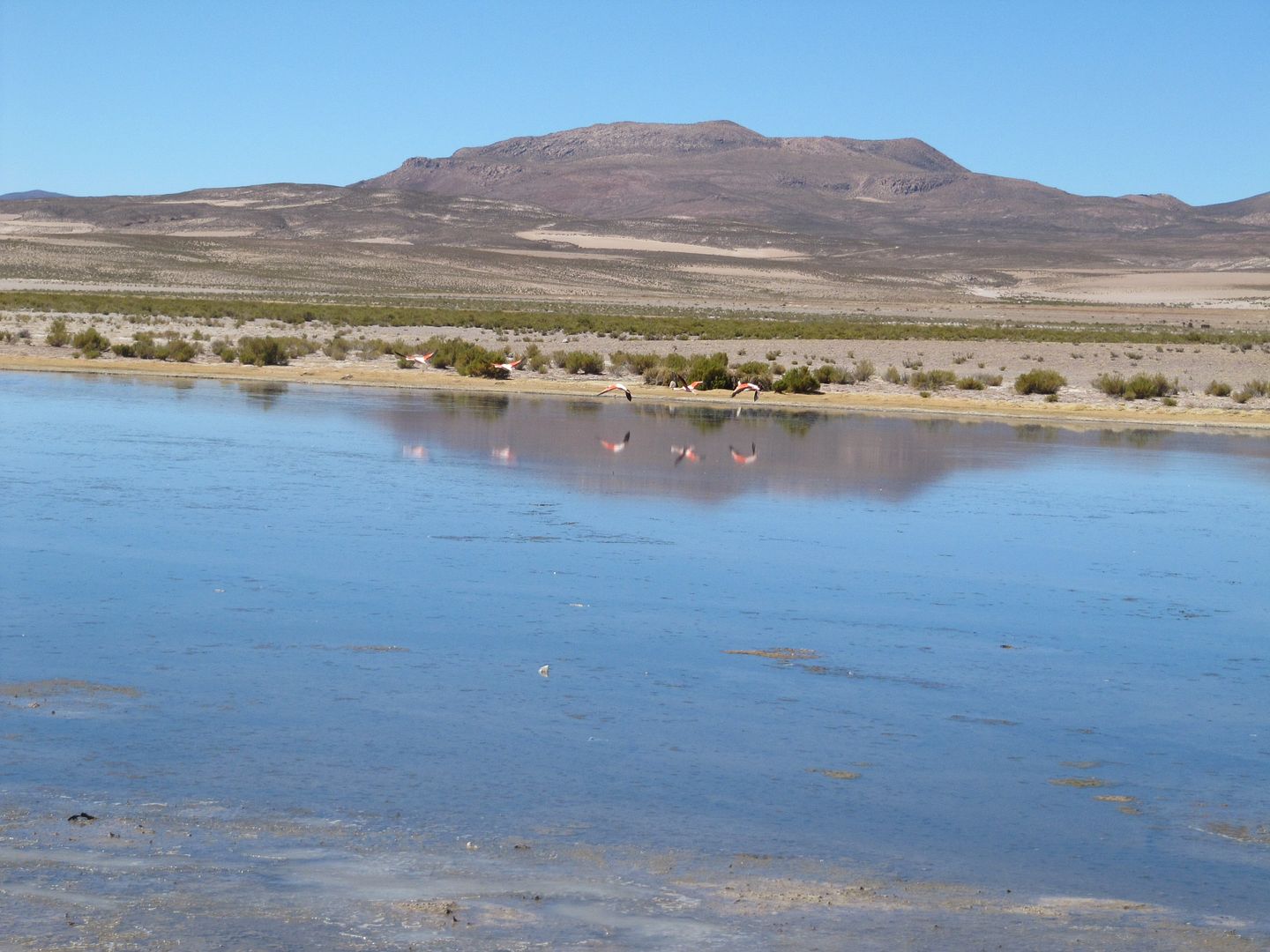 |
| Flamingoes on Bolivian Altiplano |
He told us about a strange plant that was growing on some of the rocks. It looks like a light green moss, but is rock hard except for its tiny red flowers. It grows only one centimetre per year. Inside it is a bit like burnt wood and is used for fuel. It is also a medicinal plant as they crush it into a resin and then use it to make a liquid to treat pain.
 |
| Bolivian Altiplano |
The rocks here also act as home to the local chinchillas so we waited patiently while our guide, with the aid of an apple, coaxed one of them out of its sleep. It is like a large rabbit but with a long tail, and timid though it was, it did give in to the temptation of the apple, so we all got to see it.
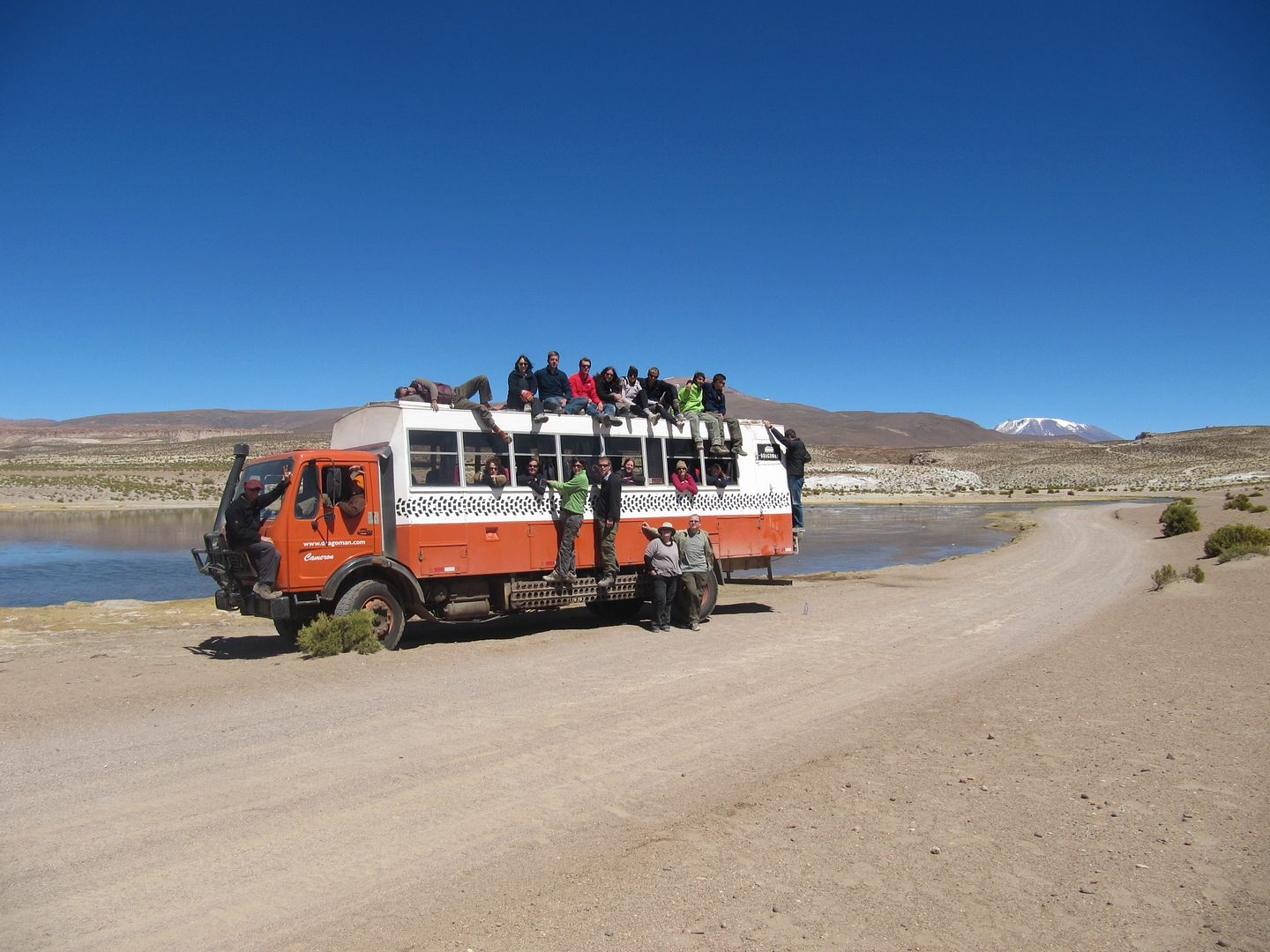 |
| Cameron and friends |
Driving along, as well as the usual llamas and vicuna, we also saw a rhea, which is like an emu. It decided to challenge Cameron and ran alongside us. It did OK for a bit but soon ran out of puff and gave up.
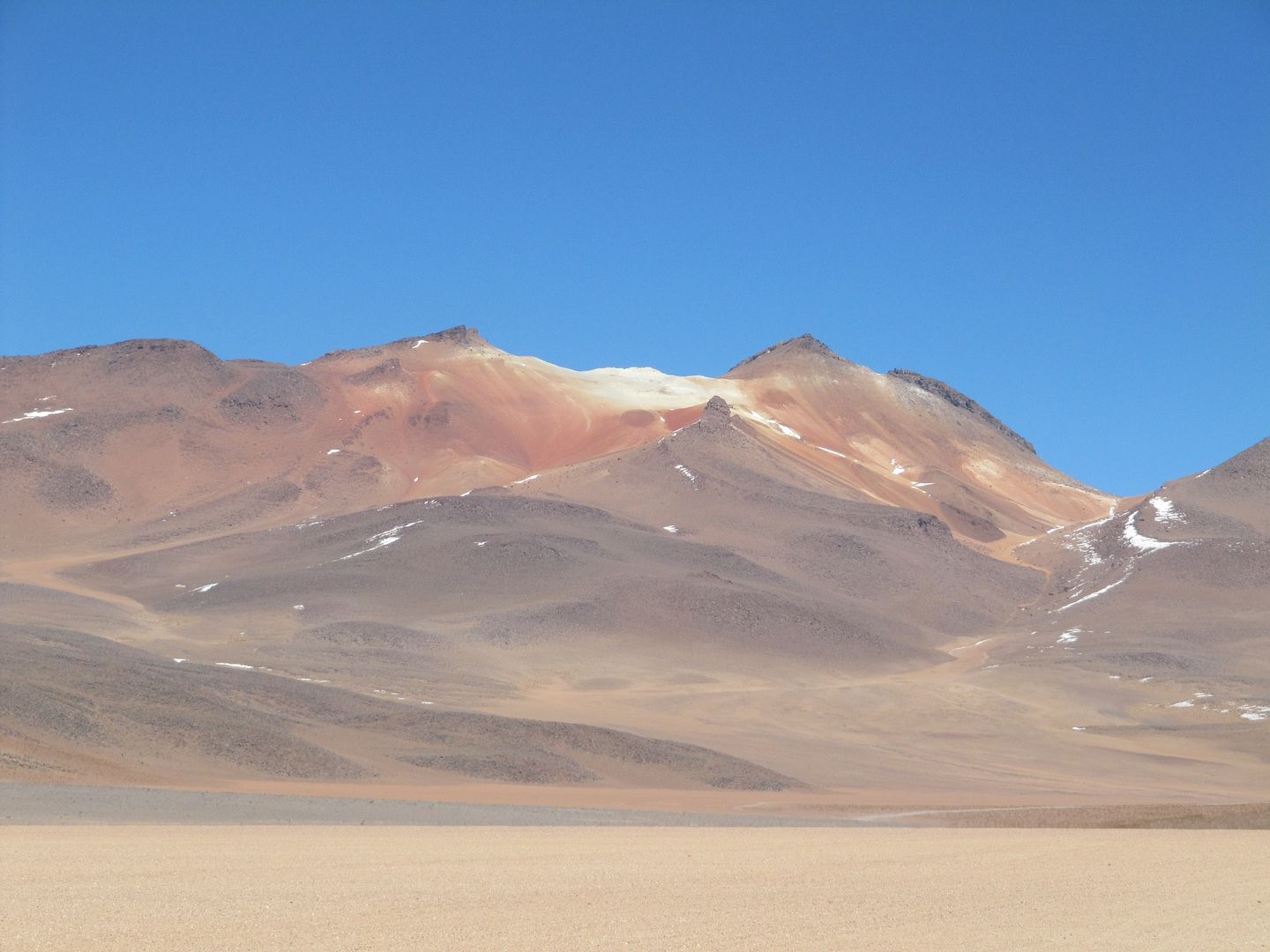
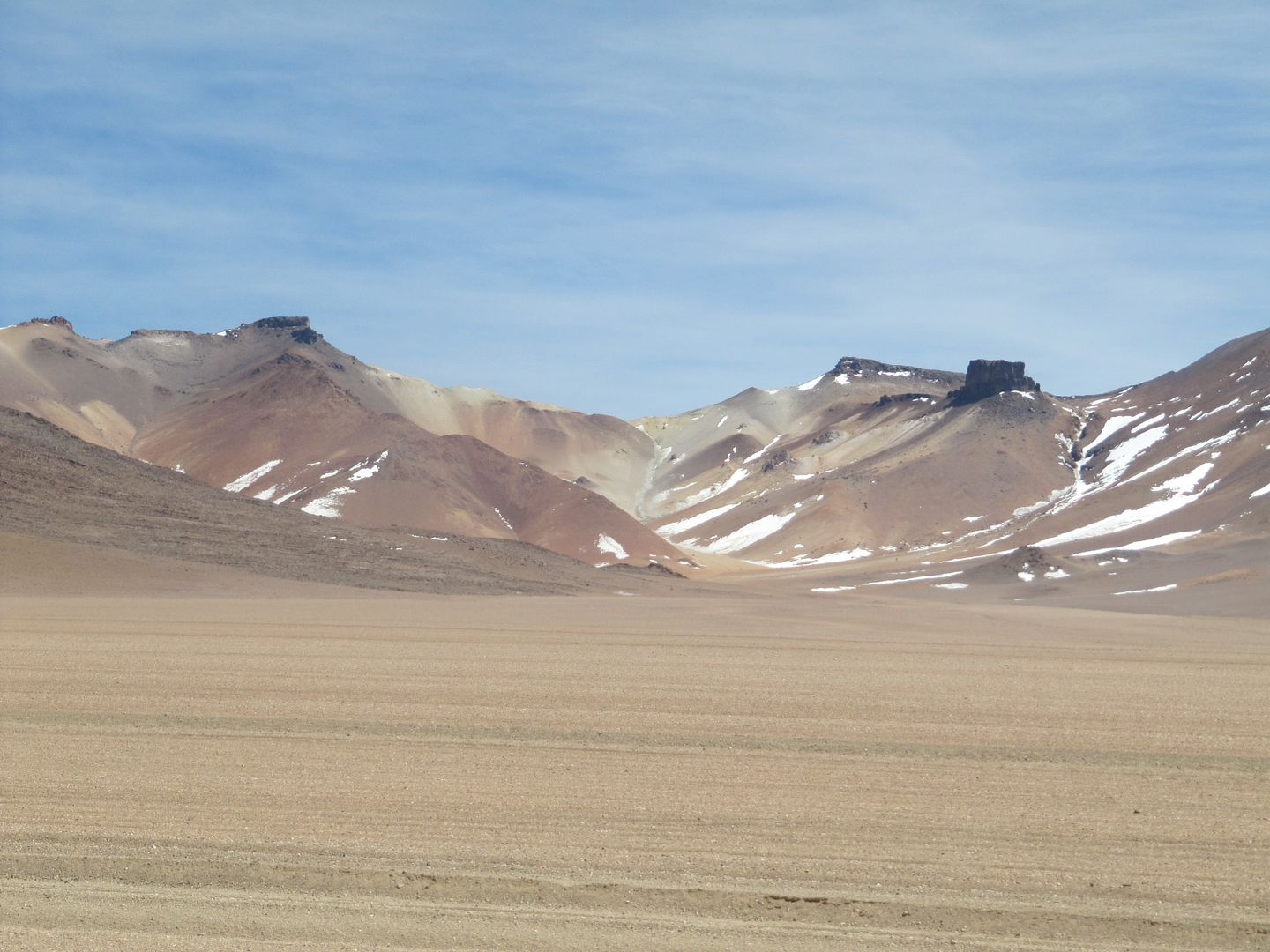
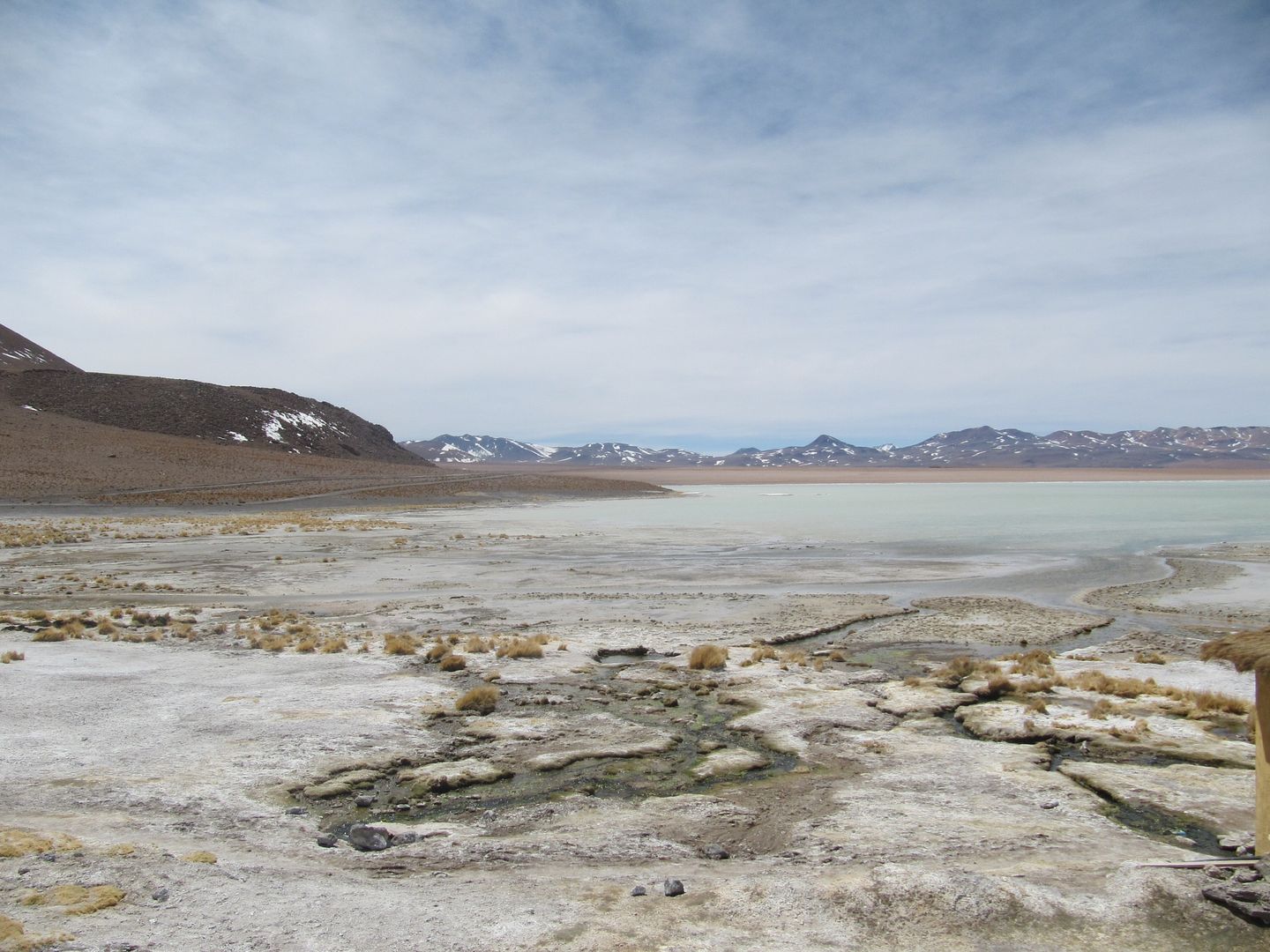
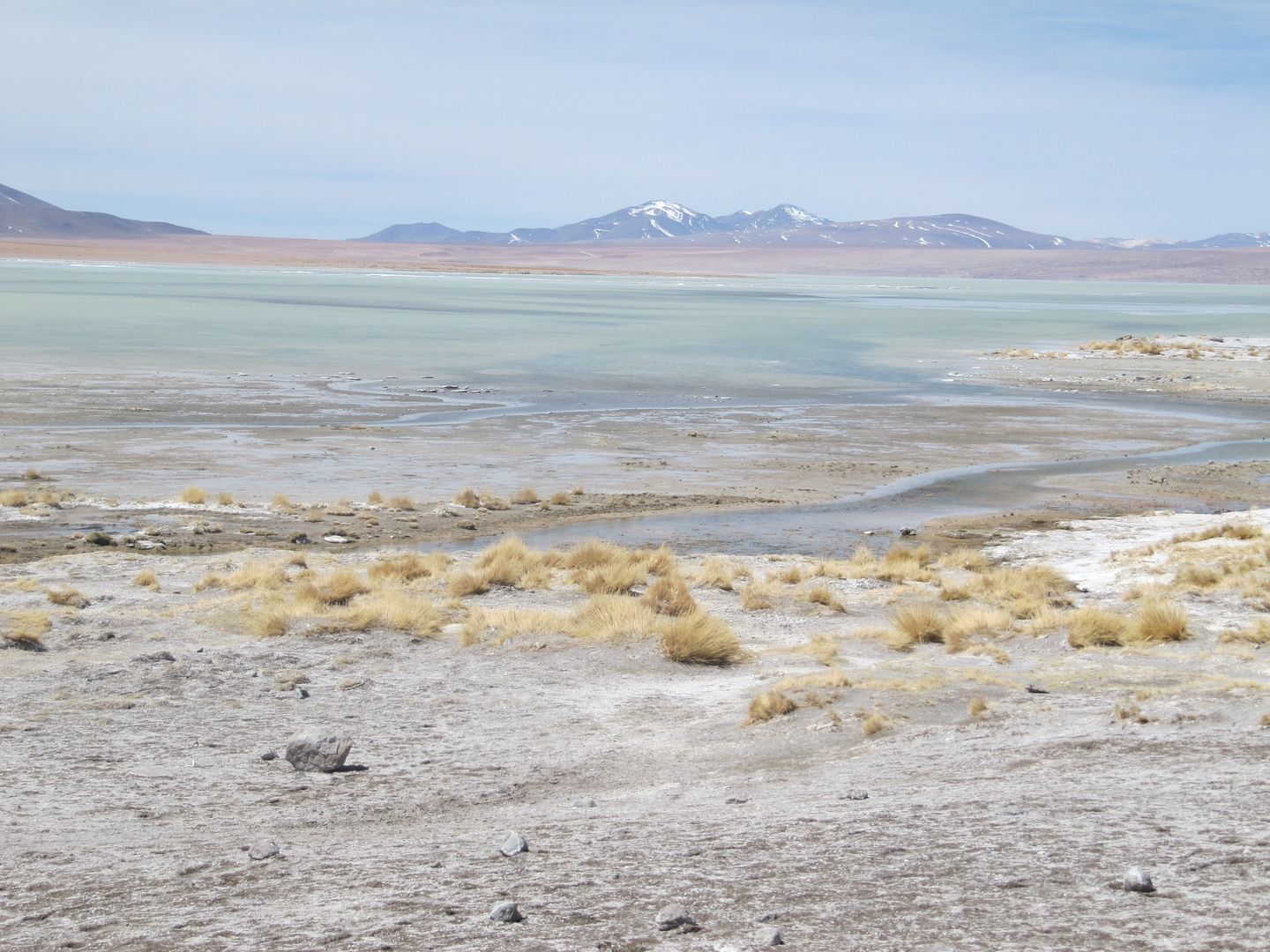
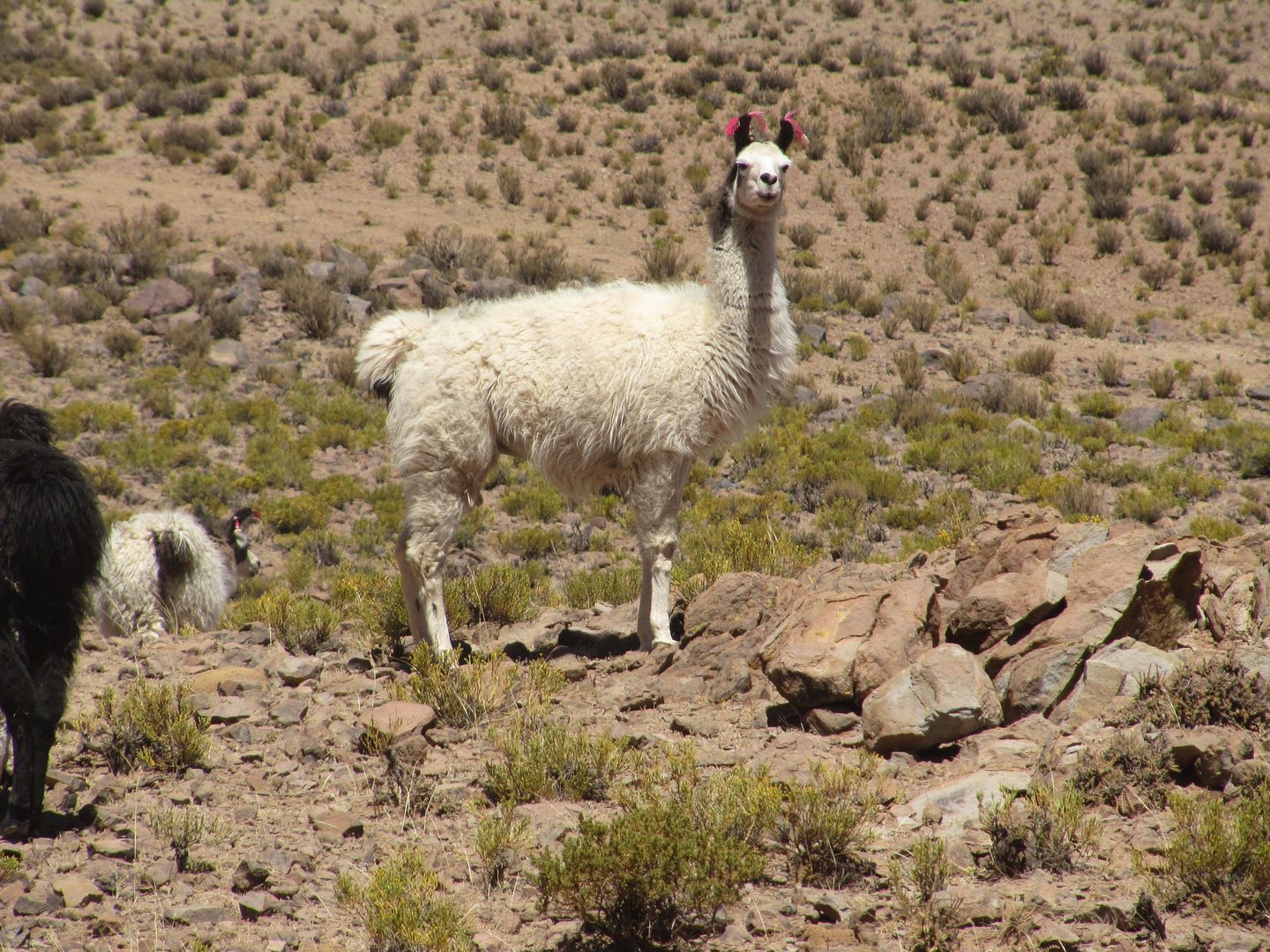
No comments:
Post a Comment
We like to hear from you too, so please leave us a message here. We are also happy to answer any questions if we can help. Comments are moderated so will not appear straight away and there could be some delay in replying if we are travelling.